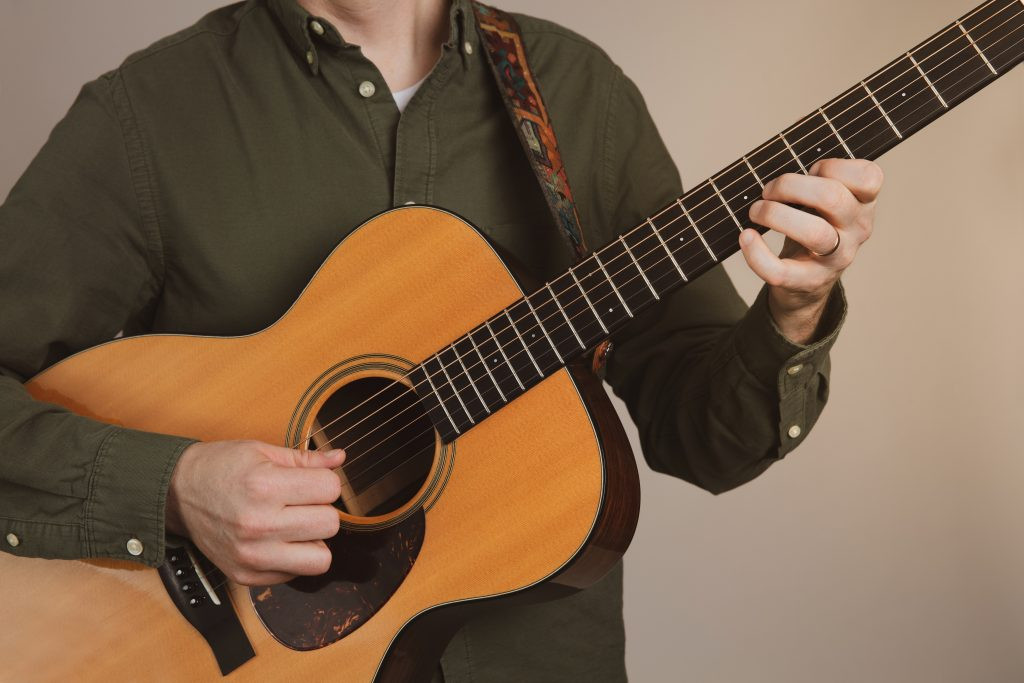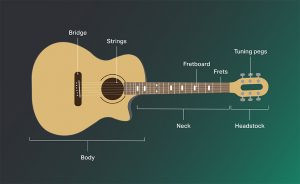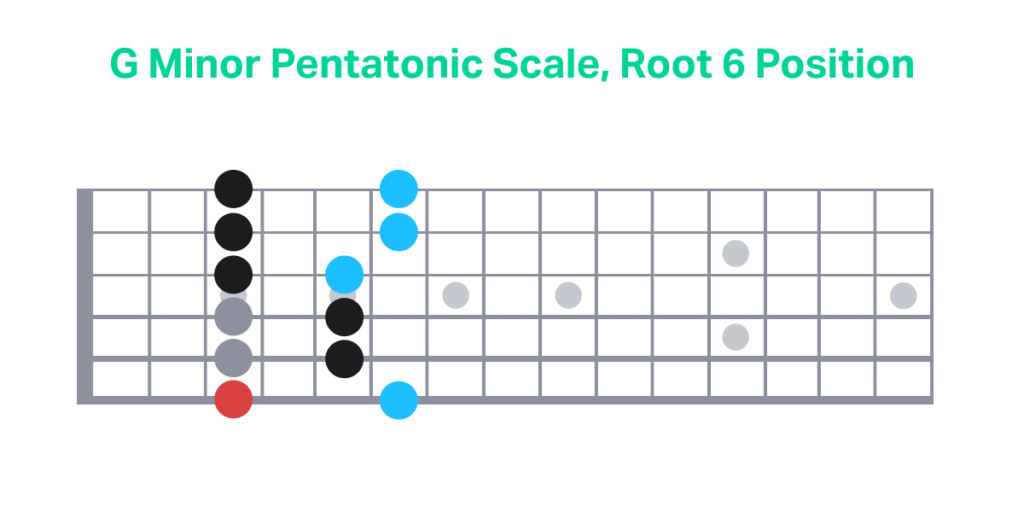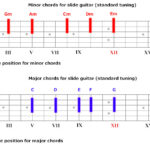Have you ever dreamt of effortlessly playing your favorite songs on the guitar? The allure of creating music, whether for personal enjoyment or to captivate an audience, is a powerful motivator for aspiring guitarists of all ages. If you’re here, it means you’re ready to embark on this exciting musical journey and learn How Do You Play Guitar!
Congratulations on taking the first step! This guide will set you on the path to playing guitar like the musicians you admire. We’ve compiled essential information and linked to more in-depth resources within our blog to help you develop your guitar skills effectively.
1. Acoustic vs. Electric Guitar: Which is Right for You?
The first crucial decision is choosing between an acoustic and an electric guitar. Both are excellent starting points, depending on your musical interests and goals. We have detailed buying guides available on our blog for both acoustic guitars and electric guitars to help you make an informed choice.
 Acoustic and Electric Guitars
Acoustic and Electric Guitars
Acoustic Guitars: Simplicity and Affordability
Acoustic guitars are often recommended for beginners due to their simplicity and affordability. A nylon-string acoustic guitar is particularly gentle on the fingertips, making it a comfortable entry point. While budget-friendly options exist, investing in a quality acoustic guitar is advisable. A better instrument will not only last longer but also provide a more enjoyable playing experience as you progress beyond the initial stages.
 Playing Acoustic Guitar
Playing Acoustic Guitar
Electric Guitars: Versatility and Rock Potential
Electric guitars, while typically more expensive upfront due to the need for additional equipment like amplifiers, offer greater versatility. If you’re drawn to genres like rock, blues, or metal, and envision yourself playing lead guitar lines in addition to chords, an electric guitar might be the ideal starting point. Remember to factor in the cost of an amplifier and potentially a distortion pedal if you want to achieve those classic rock tones.
2. Getting to Know Your Instrument: Guitar Anatomy
To truly learn how do you play guitar, understanding the different parts of the instrument is essential. Familiarizing yourself with guitar anatomy will make learning resources and instructions much clearer. Key guitar parts include:
- Body: The main resonating part of the guitar.
- Fretboard: The wooden surface on the neck where you press down strings.
- Frets: Metal strips embedded in the fretboard that divide the neck into notes.
- Neck: The long piece of wood connecting the headstock to the body.
- Headstock: Located at the top of the neck, it holds the tuning pegs.
- Strings: Usually six strings that vibrate to produce sound.
- Tuning Pegs: Used to adjust string tension and tune the guitar.
 Guitar Parts Diagram
Guitar Parts Diagram
Depending on whether you chose an acoustic or electric guitar, you’ll notice some variations. Acoustic guitars typically have a soundhole in the body to project sound, while electric guitars feature pickups, knobs for volume and tone control, and output jacks for connecting to amplifiers.
3. Finding Your Grip: How to Hold a Guitar Correctly
Proper posture and guitar holding technique are crucial for comfortable playing and preventing bad habits. How you hold the guitar can vary slightly depending on whether you’re playing acoustic or electric and whether you’re sitting or standing.
For acoustic guitar, sitting is the most common position. Rest the guitar on your lap, typically with the curve of the body resting on your right or left leg, whichever feels more natural and stable.
While sitting is also an option for electric guitar, many electric guitarists prefer to play standing up, especially when performing or practicing with an amplifier. In this case, you’ll need a guitar strap to support the instrument.
 Proper Guitar Posture
Proper Guitar Posture
Orient your guitar so the thickest string (the low E string) is nearest to your face when you look down at the instrument in playing position. The hand that presses down the strings on the neck is your fretting hand (usually the left hand for right-handed players). The other hand, which strums or picks the strings, is your picking or strumming hand (usually the right hand for right-handed players).
Left-handed individuals have options: they can learn to play a standard right-handed guitar, flip a right-handed guitar over (reversing string order), or use a left-handed guitar specifically designed for left-handed players.
4. String Theory: Guitar Strings and the Fretboard Map
Understanding the fretboard and strings is fundamental to how do you play guitar. The guitar strings are named from thickest to thinnest: E, A, D, G, B, and E (often remembered with mnemonics). The thickest string, closest to you when holding the guitar, is the low E string.
Pressing the strings down onto the fretboard to produce notes can initially cause finger discomfort. Don’t worry, this is normal! As you continue to play, your fingertips will develop calluses, becoming stronger and less sensitive.
Nylon strings, found on classical acoustic guitars, are softer and easier to press than steel strings, making them a gentler option for beginners. To produce a clear sound, ensure you press the string firmly just behind the fret, not directly on top of it.
5. Tuning In: Getting Your Guitar in Tune
Playing a guitar that’s out of tune is not only unpleasant to the ear but also hinders your learning process. Accurate tuning is paramount. As a beginner, stick to standard EADGBE tuning. Forget about alternate guitar tunings for now; mastering standard tuning is the priority. EADGBE represents the notes of the six strings from the thickest (lowest pitch) to thinnest (highest pitch).
 Guitar Tuning Process
Guitar Tuning Process
Electronic tuners are incredibly helpful for beginners, making tuning quick and accurate for both acoustic and electric guitars. For an even more convenient and cost-effective solution, utilize a free online guitar tuner app like GuitarTuna. These apps are readily available on your smartphone, eliminating the need for extra equipment and allowing you to tune your guitar anytime, anywhere.
6. Chord Fundamentals: Playing Basic Guitar Chords
Before attempting complex guitar solos, mastering basic chords is essential. Familiarize yourself with guitar chord charts, which visually represent how to position your fingers to form different chords. Start with open chords, often called “cowboy chords”. These are typically categorized as major and minor chords.
If you ever forget a chord shape, our comprehensive guitar chord charts library is a valuable resource.
Major Chords: Happy and Bright Sounds
Take it slow when learning guitar. Start with a few fundamental chords. Surprisingly, just a handful of simple guitar chords can unlock countless songs! Good major chords to begin with are A, D, C, and E. Here’s a chord chart example for the E major chord: (Note: You would typically insert a chord chart image here, but as text, we describe it).
Minor Chords: Melancholy and Somber Tones
Excellent minor chords for beginners include A minor (Am) and E minor (Em). Minor chords are denoted by a lowercase “m.” Minor chords evoke a darker, sadder feel compared to the brighter, happier sound of major chords. Here’s how to play E minor:
 E Minor Chord Diagram
E Minor Chord Diagram
7. Strumming Patterns: Bringing Chords to Life
To play a chord musically, you’ll need to strum across multiple strings simultaneously. However, some chords, like D and C, require you to avoid strumming certain strings. This variation in strumming and finger positioning is what makes some chords easier to play than others initially. Be mindful not to accidentally mute strings with your strumming hand.
Once you’re comfortable strumming basic open chords, experiment with upstrokes and downstrokes, more intricate strumming patterns, and chord progressions. You can also explore different chord types, including barre chords, which involve using one finger to press down multiple strings at once.
8. Reading Guitar Tablature: Beyond Chords
When you’re ready to move beyond just chords and learn melodies, guitar tablature, or “tabs,” becomes invaluable. Guitar tabs are a simplified way to read music notation specifically for guitar. They represent the six guitar strings as horizontal lines, and numbers on these lines indicate which fret to play on that string. “0” signifies an open string, and “X” indicates a muted string. The bottom line represents the low E string, and the top line is the high E string.
Tabs can also represent chords. However, their real strength lies in depicting individual notes, melodies, and techniques like slides, bends, hammer-ons, pull-offs, and more, essential for playing solos and riffs. While these techniques might come later in your learning journey, understanding tabs opens up a vast world of guitar music.
9. Picking Techniques: Using a Guitar Pick
While fingerpicking (playing individual notes with your fingers) is a valid technique, especially in genres like classical and fingerstyle guitar, a guitar pick is extremely useful, particularly for electric guitar and for strumming chords on both acoustic and electric guitars. Guitar picks come in various shapes, sizes, and materials, but thickness is the most crucial factor influencing tone and playing style.
 Assorted Guitar Picks
Assorted Guitar Picks
To use a pick for single-note picking, hold it firmly but not too tightly between your thumb and index finger, letting a small portion protrude. Keep your other fingers relaxed. Start by picking individual strings slowly, focusing on accuracy. Gradually increase speed and practice both downstrokes and upstrokes. Don’t be discouraged by initial mistakes; developing pick control takes practice.
10. Exploring Scales: Major and Minor Building Blocks
Guitar scales and music theory might seem daunting initially, but scales are incredibly beneficial. They help you navigate the fretboard, understand note relationships, and are essential for improvisation and songwriting. Just like chords, scales come in major and minor forms, each with a distinct sound.
 G Minor Pentatonic Scale Chart
G Minor Pentatonic Scale Chart
Yousician offers interactive exercises to help you master various guitar scales. Practice playing scales up and down to memorize patterns. As your finger dexterity improves, gradually increase your speed.
11. Playing Your Favorite Songs: The Ultimate Goal
Now for the exciting part – playing your favorite songs! Forget cumbersome songbooks; the internet provides guitar tabs and chords for virtually any song imaginable. Simply search online for “[song title] tab” or “[song title] chords,” and you’ll likely find transcriptions created by fellow guitar enthusiasts.
Beyond standard tabs and chords, interactive music learning apps like Yousician enhance the song-learning experience. Explore Yousician’s extensive song library spanning diverse artists, genres, and bands. Your favorite song might be waiting for you to learn it right now!
12. The Power of Practice: Consistency is Key
Once you grasp basic chords, tuning, fretboard navigation, and tab reading, consistent practice is paramount. Make guitar practice a regular part of your routine. While initial finger soreness is normal, with continued practice, your hands will adapt, build strength, and develop muscle memory.
 Woman Practicing Guitar with Yousician
Woman Practicing Guitar with Yousician
Learn Guitar Basics with Yousician!
While dedicated practice is essential, remember that playing guitar should be enjoyable! Maintaining motivation is key to long-term progress. That’s where Yousician steps in.
Yousician acts as your personalized guitar tutor, guiding you through interactive lessons at your own pace. Our song library provides access to hundreds of popular songs to learn and play along with. Yousician delivers real-time feedback during practice sessions, making learning fun and motivating, encouraging you to continuously improve your guitar skills.
Download Yousician on your computer or mobile device and begin your musical adventure today!
Frequently Asked Questions About Learning Guitar
Starting guitar can bring up many questions. Here are some encouraging answers for aspiring players:
How long does it take to learn to play the guitar proficiently?
The learning curve varies significantly. Practice frequency, practice quality, and individual learning styles all play a role. Prior musical experience can be beneficial.
Consistent practice is the most significant factor. With regular effort, you can progress beyond the beginner stage within months and reach an intermediate level in one to three years. Guitar mastery is a lifelong pursuit, offering endless learning opportunities!
How often should I practice guitar as a beginner?
Aim for 15-30 minutes of focused practice most days. If you’re enjoying it and have more time, by all means, play longer! Don’t be discouraged by occasional missed days. Consistency over time is crucial. You’ll gradually improve, even if progress isn’t always immediately apparent. Minimize distractions during practice sessions to maximize effectiveness—and remember to have fun!
Is music theory essential for playing guitar?
While you can play guitar without deep music theory knowledge, understanding some basics will enhance your progress and musical understanding. Music theory can accelerate learning new songs and grasping musical concepts. However, if your primary goal is simply to enjoy playing your favorite songs, don’t let music theory be a barrier.
How can I effectively learn guitar at home?
Starting from scratch can feel overwhelming. Guidance and encouragement are invaluable. Learning guitar at home is entirely achievable, even without a traditional in-person teacher. Online guitar lessons and interactive apps provide structured learning paths and make it easy to begin your guitar journey from the comfort of your home.
Can I successfully learn guitar by myself?
Absolutely! Many iconic guitarists, like Jimi Hendrix and Eric Clapton, were self-taught. Self-learning is more accessible than ever thanks to online resources and music learning technology. Apps and readily available online materials empower you to learn at your own pace and become a skilled player independently.
Ready to start playing?
Play the songs you love with Yousician. Try Premium+ free for 7 days. Sign up and start learning now.
Start your free trial

